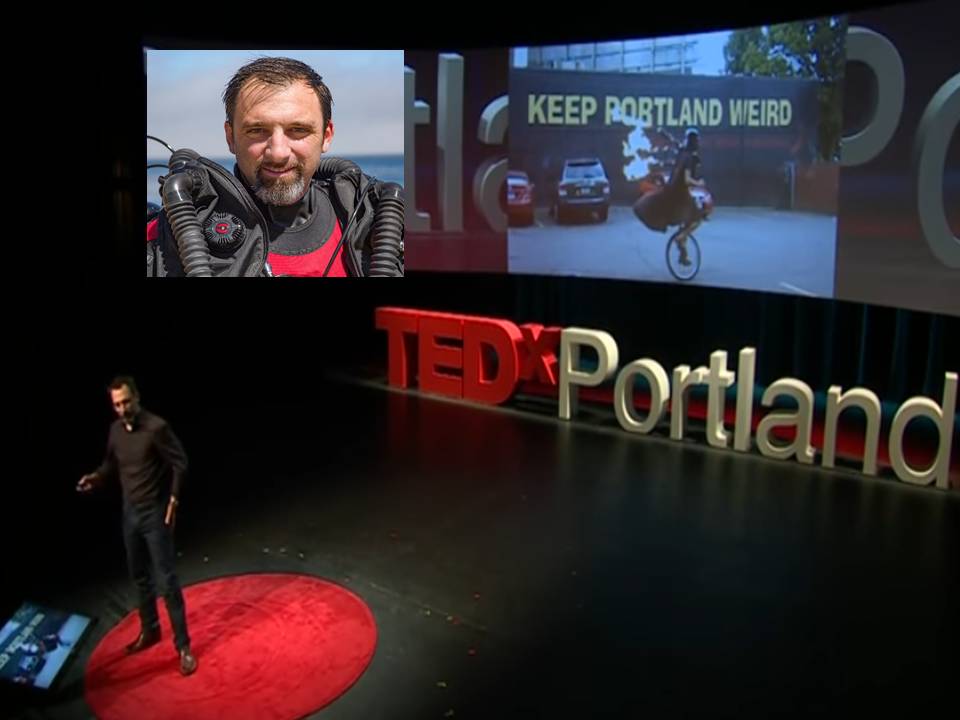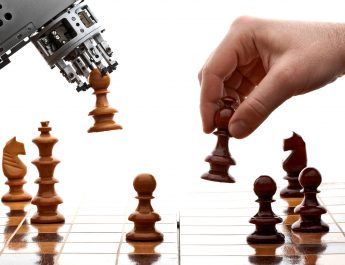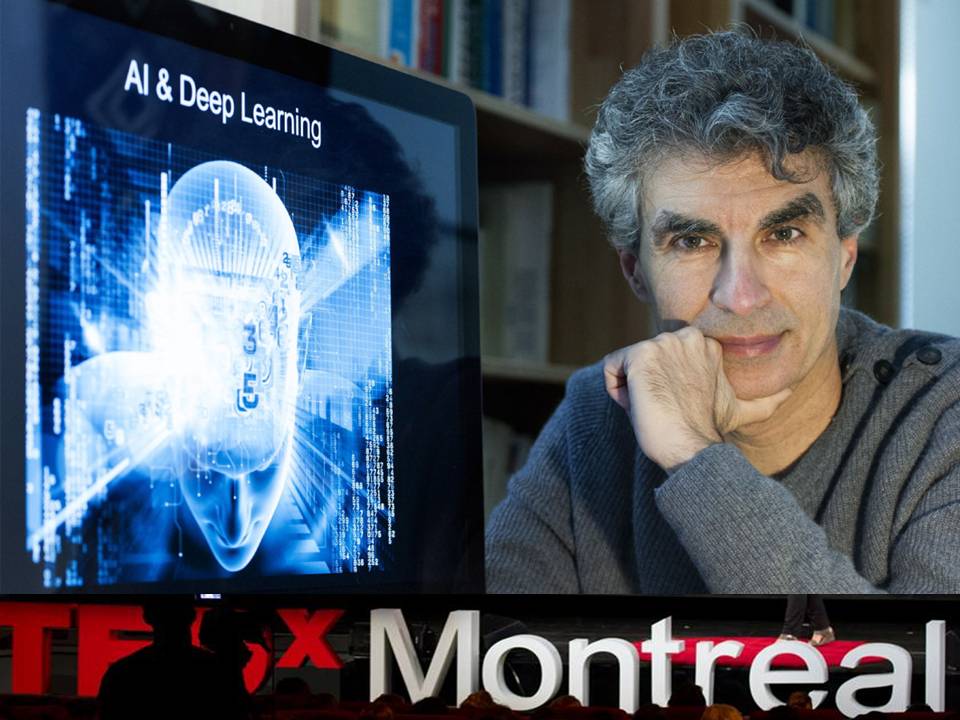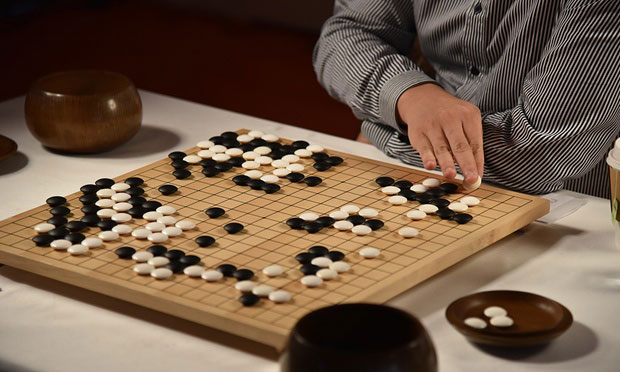What do you get when you give a design tool a digital nervous system? Computers that improve our ability to think and imagine, and robotic systems that come up with and build radical new designs for bridges, cars, drones and much more — all by themselves. Take a tour of the Augmented Age with futurist Maurice Conti and preview a time when robots and humans will work side-by-side to accomplish things neither could do alone.
“Over the course of the next 20 years, more will change around the way we do our work than has happened in the last 2,000. In fact, I think we’re at the dawn of a new age in human history.”
“Now, there have been four major historical eras defined by the way we work. The Hunter-Gatherer Age lasted several million years. And then the Agricultural Age lasted several thousand years. The Industrial Age lasted a couple of centuries. And now the Information Age has lasted just a few decades. And now today, we’re on the cusp of our next great era as a species.”
“Welcome to the Augmented Age. In this new era, your natural human capabilities are going to be augmented by computational systems that help you think, robotic systems that help you make, and a digital nervous system that connects you to the world far beyond your natural senses.”
“What’s exciting is we’re starting to see this technology out in the real world. We’ve been working with Airbus for a couple of years on this concept plane for the future. It’s a ways out still. But just recently we used a generative-design AI to come up with this. This is a 3D-printed cabin partition that’s been designed by a computer. It’s stronger than the original yet half the weight, and it will be flying in the Airbus A320 later this year. So computers can now generate; they can come up with their own solutions to our well-defined problems. But they’re not intuitive. They still have to start from scratch every single time, and that’s because they never learn. Unlike Maggie.”
“Interestingly, that’s exactly what computer scientists have been trying to get AIs to do for the last 60 or so years. Back in 1952, they built this computer that could play Tic-Tac-Toe. Big deal. Then 45 years later, in 1997, Deep Blue beats Kasparov at chess. 2011, Watson beats these two humans at Jeopardy,which is much harder for a computer to play than chess is. In fact, rather than working from predefined recipes, Watson had to use reasoning to overcome his human opponents. And then a couple of weeks ago, DeepMind’s AlphaGo beats the world’s best human at Go, which is the most difficult game that we have. In fact, in Go, there are more possible moves than there are atoms in the universe. So in order to win, what AlphaGo had to do was develop intuition. And in fact, at some points, AlphaGo‘s programmers didn’t understand why AlphaGo was doing what it was doing.”
“And things are moving really fast. I mean, consider — in the space of a human lifetime, computers have gone from a child’s game to what’s recognized as the pinnacle of strategic thought. What’s basically happening is computers are going from being like Spock to being a lot more like Kirk.”
“Here’s another cool project that Bishop worked on. The goal of this project, which we called the HIVE,was to prototype the experience of humans, computers and robots all working together to solve a highly complex design problem. The humans acted as labor. They cruised around the construction site, they manipulated the bamboo — which, by the way, because it’s a non-isomorphic material, is super hard for robots to deal with. But then the robots did this fiber winding, which was almost impossible for a human to do. And then we had an AI that was controlling everything. It was telling the humans what to do, telling the robots what to do and keeping track of thousands of individual components. What’s interesting is,building this pavilion was simply not possible without human, robot and AI augmenting each other.”
“The good news is, we’re working on digital nervous systems that connect us to the things we design.We’re working on one project with a couple of guys down in Los Angeles called the Bandito Brothers and their team. And one of the things these guys do is build insane cars that do absolutely insane things. These guys are crazy in the best way. And what we’re doing with them is taking a traditional race-car chassis and giving it a nervous system.”
“So we instrumented it with dozens of sensors, put a world-class driver behind the wheel, took it out to the desert and drove the hell out of it for a week. And the car’s nervous system captured everything that was happening to the car. We captured four billion data points; all of the forces that it was subjected to.And then we did something crazy. We took all of that data, and plugged it into a generative-design AI we call “Dreamcatcher.” So what do get when you give a design tool a nervous system, and you ask it to build you the ultimate car chassis? You get this. This is something that a human could never have designed. Except a human did design this, but it was a human that was augmented by a generative-design AI, a digital nervous system and robots that can actually fabricate something like this.
So if this is the future, the Augmented Age, and we’re going to be augmented cognitively, physically and perceptually, what will that look like? What is this wonderland going to be like?
I think we’re going to see a world where we’re moving from things that are fabricated to things that are farmed. Where we’re moving from things that are constructed to that which is grown. We’re going to move from being isolated to being connected. And we’ll move away from extraction to embrace aggregation. I also think we’ll shift from craving obedience from our things to valuing autonomy.
Thanks to our augmented capabilities, our world is going to change dramatically. We’re going to have a world with more variety, more connectedness, more dynamism, more complexity, more adaptability and, of course, more beauty. The shape of things to come will be unlike anything we’ve ever seen before.Why? Because what will be shaping those things is this new partnership between technology, nature and humanity. That, to me, is a future well worth looking forward to.

Who is Maurice Conti?
Maurice is a designer, futurist, and innovator. He’s worked with startups, government agencies, renowned artists, and corporations to explore the things that will matter to them in the future and design the solutions to get them there. Maurice is currently director of strategic innovation at Autodesk and also leads Autodesk’s Applied Research Lab in the Office of the CTO. Maurice and his team are responsible for helping to identify how the future will shape Autodesk, and how the company can shape the future to make our world a better place. His team’s current research focuses on advanced robotics, Internet of Things, applied machine learning, and maritime/sea-level rise. Maurice is also an explorer of geographies and cultures. He has circumnavigated the globe once and been half-way around twice. In 2009, he was awarded the Medal for Exceptional Bravery at Sea by the United Nations, the New Zealand Bravery Medal, and a U.S. Coast Guard Citation for Bravery for saving the lives of three shipwrecked sailors. Maurice lives in Muir Beach, California, where he serves his local community as a volunteer firefighter.





n the twenty-first century, AI techniques have experienced a resurgence following concurrent advances in computer power, large amounts of data, and theoretical understanding, and AI techniques have become an essential part of the technology industry, helping to solve many challenging problems in computer science.